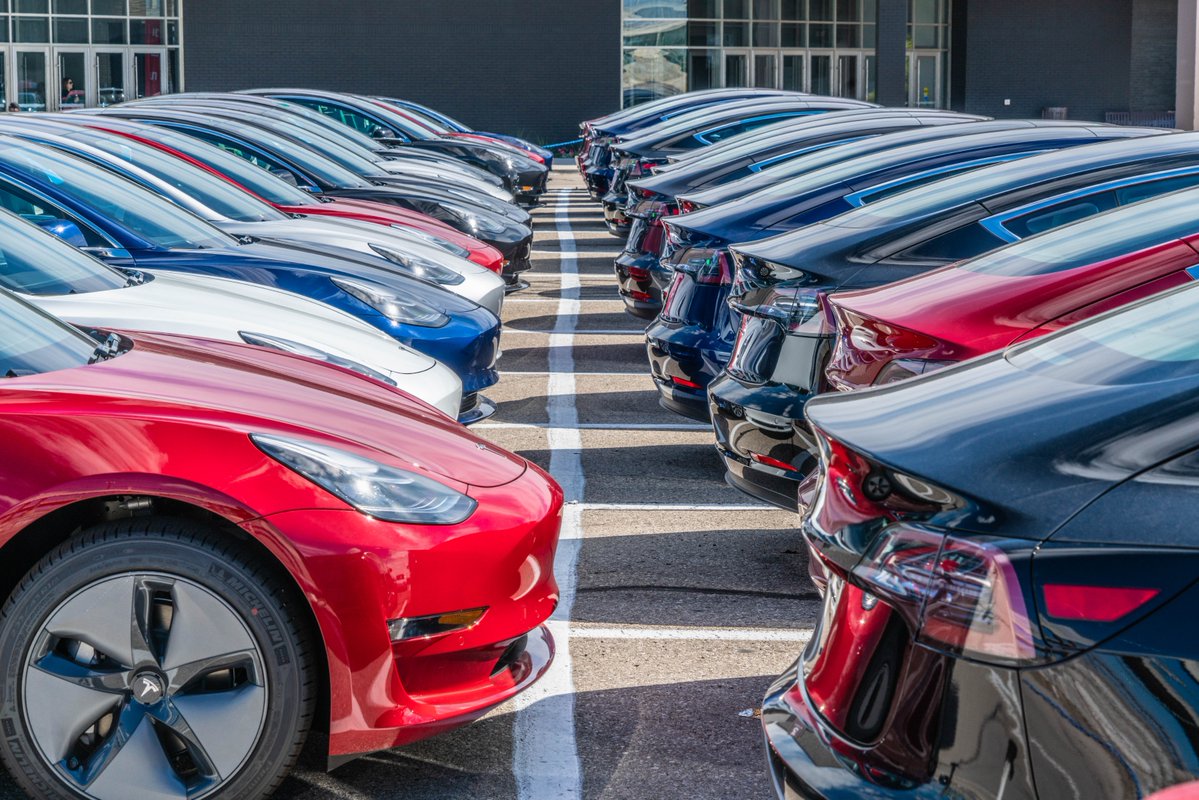
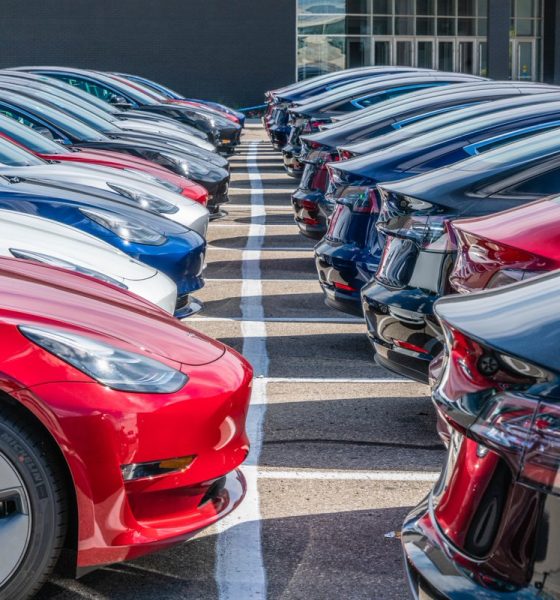
News
Tesla is building an empire with Model 3 drive units, custom chips, and loyal customers
When the Tesla Semi and the next-generation Roadster were unveiled last year, Elon Musk pointed out that the whole company was built on the original Roadster, an electric car which proved that EVs could be exciting, fun, and quick. Tesla is now at a point where it could become a threat to established premium automakers; and just like how Apple built a trillion-dollar empire on the back of the iPhone, Tesla seems poised to establish its own empire through its Model 3 drive units, its custom-made chips, and its passionate consumer base.
The brilliance of the Model 3’s drive unit was recognized by Detroit veteran Sandy Munro, whose company conducted a thorough teardown and analysis of the electric sedan. While Munro noted some points for improvement with regards to the vehicle’s chassis, he was incredibly impressed with the car’s suspension, batteries, and electric motor. Recently relating his findings to Bloomberg, Munro noted that the Model 3’s electric motor is a “game changer,” and that “everyone should be benchmarking (it).” The entire subframe where the drive unit is housed even detaches cleanly from the Model 3, seemingly allowing DIY enthusiasts in the future to resurrect drive units from damaged vehicles by using them for electric car conversions.
Tesla recently shared images of the Model 3’s drive system after being tested for over 1 million miles. Images of the drive system’s gears suggest that there was very little wear and tear despite extensive testing. With this in mind, Tesla’s idea of using the Model 3’s drive unit to power upcoming vehicles like the Semi and the Model Y, or possibly even the Tesla Truck and the upcoming compact car, could pay off in spades for the company. If teardowns of the Model 3 are any indication, after all, the electric car’s drive unit could very well be reliable, easy to manufacture, and even swappable if the need arises. It could, in a way, be a building block in Tesla’s emerging empire.
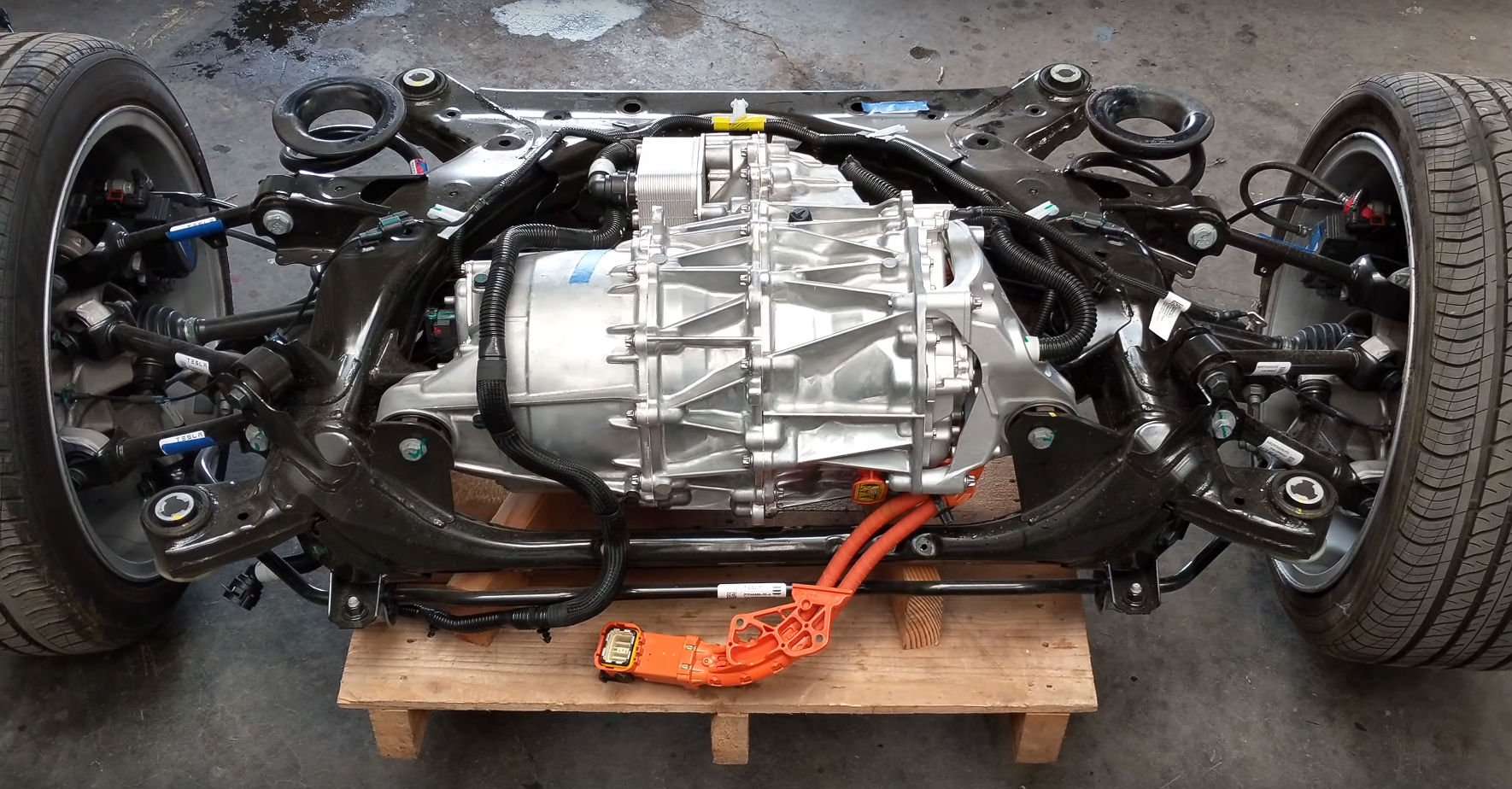
Beyond the Model 3’s drive units, Tesla is also starting to dip its feet into creating its custom chip. Such a strategy is very much in line with Tesla’s character, considering that the company already manufactures many of its vehicles’ components in-house. In an interview with Yahoo Finance last week, ARK Invest CEO and CIO Cathie Wood noted that the electric car maker’s initiatives towards the creation of its own hardware are a “replay of Apple.” Wood notes that in the same way Apple’s innovations with the iPhone pushed the tech giant to create its own silicon, Tesla’s progress with the intelligent tech in its vehicles are driving the electric car maker to design and build its own chips.
“This is a replay of Apple. Apple was moving so fast with the smartphone that it had to design its own chip to move that fast. This is what has happened to Tesla. Nvidia chips will be in mostly every other autonomous vehicle to hit the market. But Musk has a vision for this market that needs (a) faster, better, cheaper, sooner (solution) – and so he designed it himself,” Wood noted.
Elon Musk is optimistic about the potential of Tesla’s custom silicon. Designed by a team led by Pete Bannon, who used to work for Apple, Musk noted that Tesla’s custom hardware would be ” the world’s most advanced computer designed specifically for autonomous operation.” This custom chip, which would be included in Tesla’s Hardware 3, will be rolled out to all production cars in around six months; and if Tesla’s other in-house solutions are any indication, the introduction of its upcoming silicon would likely allow the company to establish a lead against rival automakers who are also dabbling in self-driving initiatives.
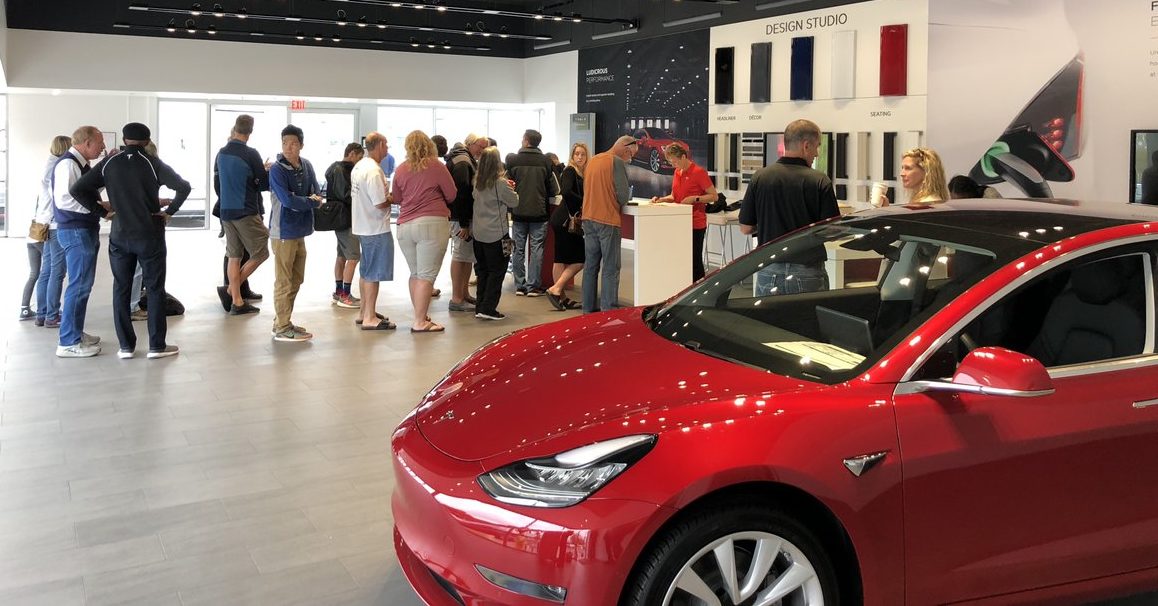
While Tesla’s vehicles and their components make the company a formidable player in the car industry, it is perhaps its dedicated consumer base that makes Tesla downright threatening to traditional auto. It is quite rare to see a car company command such a devoted following, though considering Tesla’s stance in the auto industry today, the strong brand loyalty displayed by Tesla owners is not very surprising at all. As Tesla grew over the years, after all, the company has practically transformed itself into an entity that is far more than a carmaker or a battery storage provider. Tesla has become a movement of sorts, populated by electric car owners who are willing to pay it forward when needed. This was shown in the final weeks of Q3, when owners mobilized to help the company deliver as many vehicles as it could before September ended.
The Tesla community’s dedication to the company’s mission and vision were in full force earlier this month as well, as 36 Tesla Owner’s Clubs from nine countries convened in Fremont, CA to meet and strategize initiatives that can help support the growing number of electric car owners across the globe. Denver Tesla Club President Sean M. Mitchell, who attended the meeting, believes that the source of enthusiasm among electric car owners is multifold. For one, the company was able to integrate technology in a way that made even something as ordinary as driving exciting once more. Sean also notes that the company’s grass-roots marketing approach, which relies primarily on word-of-mouth, fosters a very authentic and honest relationship among owners.
It remains to be seen if Tesla would be succeed in its mission to accelerate the world’s transition to renewable energy. That said, the company’s strategy in its electric vehicle business seems to be working, as legacy carmakers such as Porsche and Jaguar are starting to fully embrace the idea of a zero-emissions fleet. Companies such as Audi and Mercedes-Benz have also begun offering premium electric vehicles of their own. In South Australia, Tesla’s big battery is also triggering a clean energy movement, with similar renewable projects now underway after the Powerpack farm proved to be effective. Ultimately, Tesla’s empire might not be as tangible or evident today, but the components that would make it are already there, steadily growing.

Elon Musk
SpaceX issues statement on Starship V3 Booster 18 anomaly
The incident unfolded during gas-system pressure testing at the company’s Massey facility in Starbase, Texas.

SpaceX has issued an initial statement about Starship Booster 18’s anomaly early Friday. The incident unfolded during gas-system pressure testing at the company’s Massey facility in Starbase, Texas.
SpaceX’s initial comment
As per SpaceX in a post on its official account on social media platform X, Booster 18 was undergoing gas system pressure tests when the anomaly happened. Despite the nature of the incident, the company emphasized that no propellant was loaded, no engines were installed, and personnel were kept at a safe distance from the booster, resulting in zero injuries.
“Booster 18 suffered an anomaly during gas system pressure testing that we were conducting in advance of structural proof testing. No propellant was on the vehicle, and engines were not yet installed. The teams need time to investigate before we are confident of the cause. No one was injured as we maintain a safe distance for personnel during this type of testing. The site remains clear and we are working plans to safely reenter the site,” SpaceX wrote in its post on X.
Incident and aftermath
Livestream footage from LabPadre showed Booster 18’s lower half crumpling around the liquid oxygen tank area at approximately 4:04 a.m. CT. Subsequent images posted by on-site observers revealed extensive deformation across the booster’s lower structure. Needless to say, spaceflight observers have noted that Booster 18 would likely be a complete loss due to its anomaly.
Booster 18 had rolled out only a day earlier and was one of the first vehicles in the Starship V3 program. The V3 series incorporates structural reinforcements and reliability upgrades intended to prepare Starship for rapid-reuse testing and eventual tower-catch operations. Elon Musk has been optimistic about Starship V3, previously noting on X that the spacecraft might be able to complete initial missions to Mars.
Investor's Corner
Tesla analyst maintains $500 PT, says FSD drives better than humans now
The team also met with Tesla leaders for more than an hour to discuss autonomy, chip development, and upcoming deployment plans.

Tesla (NASDAQ:TSLA) received fresh support from Piper Sandler this week after analysts toured the Fremont Factory and tested the company’s latest Full Self-Driving software. The firm reaffirmed its $500 price target, stating that FSD V14 delivered a notably smooth robotaxi demonstration and may already perform at levels comparable to, if not better than, average human drivers.
The team also met with Tesla leaders for more than an hour to discuss autonomy, chip development, and upcoming deployment plans.
Analysts highlight autonomy progress
During more than 75 minutes of focused discussions, analysts reportedly focused on FSD v14’s updates. Piper Sandler’s team pointed to meaningful strides in perception, object handling, and overall ride smoothness during the robotaxi demo.
The visit also included discussions on updates to Tesla’s in-house chip initiatives, its Optimus program, and the growth of the company’s battery storage business. Analysts noted that Tesla continues refining cost structures and capital expenditure expectations, which are key elements in future margin recovery, as noted in a Yahoo Finance report.
Analyst Alexander Potter noted that “we think FSD is a truly impressive product that is (probably) already better at driving than the average American.” This conclusion was strengthened by what he described as a “flawless robotaxi ride to the hotel.”
Street targets diverge on TSLA
While Piper Sandler stands by its $500 target, it is not the highest estimate on the Street. Wedbush, for one, has a $600 per share price target for TSLA stock.
Other institutions have also weighed in on TSLA stock as of late. HSBC reiterated a Reduce rating with a $131 target, citing a gap between earnings fundamentals and the company’s market value. By contrast, TD Cowen maintained a Buy rating and a $509 target, pointing to strong autonomous driving demonstrations in Austin and the pace of software-driven improvements.
Stifel analysts also lifted their price target for Tesla to $508 per share over the company’s ongoing robotaxi and FSD programs.
Elon Musk
SpaceX Starship Version 3 booster crumples in early testing
Photos of the incident’s aftermath suggest that Booster 18 will likely be retired.
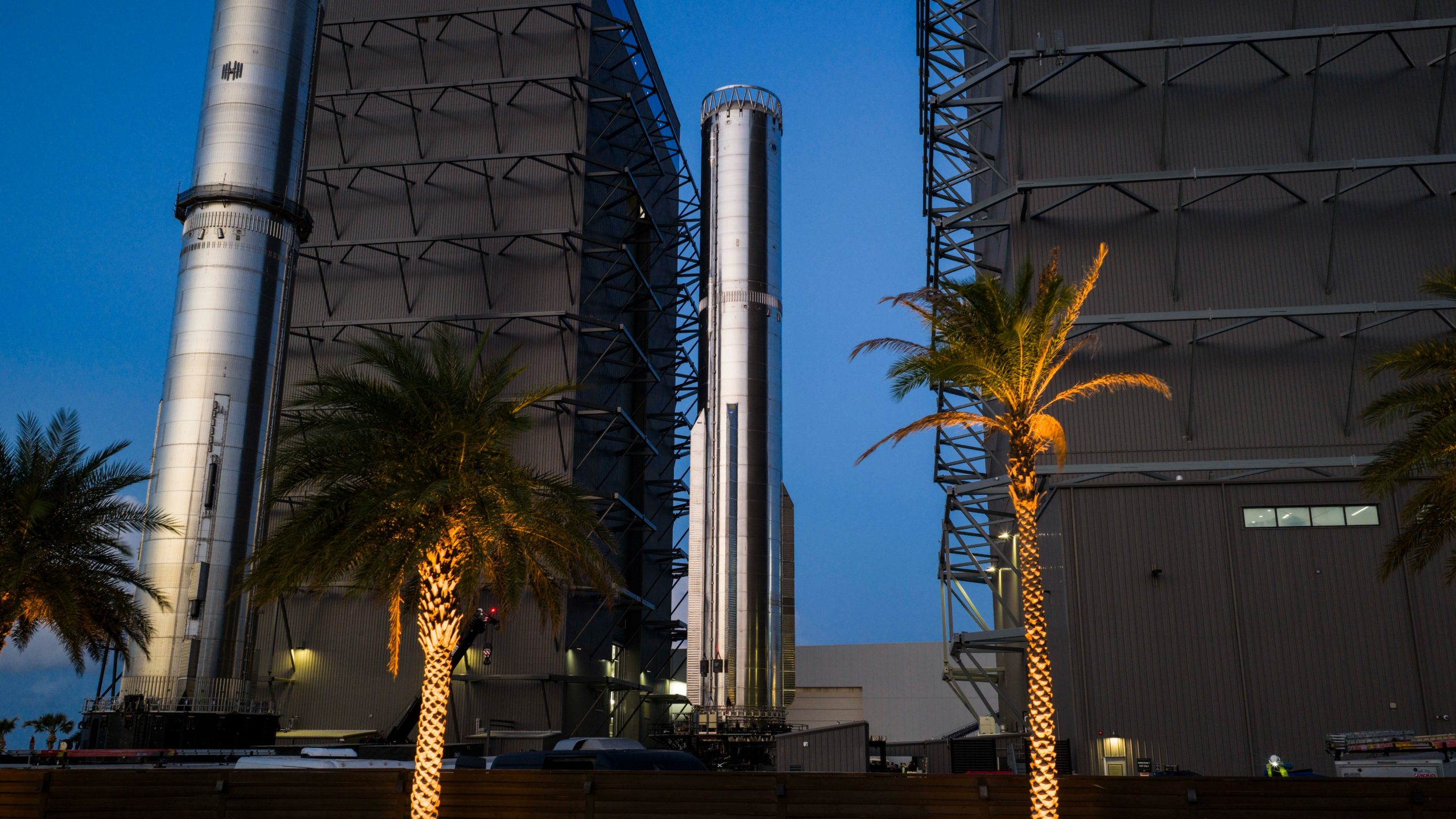
SpaceX’s new Starship first-stage booster, Booster 18, suffered major damage early Friday during its first round of testing in Starbase, Texas, just one day after rolling out of the factory.
Based on videos of the incident, the lower section of the rocket booster appeared to crumple during a pressurization test. Photos of the incident’s aftermath suggest that Booster 18 will likely be retired.
Booster test failure
SpaceX began structural and propellant-system verification tests on Booster 18 Thursday night at the Massey’s Test Site, only a few miles from Starbase’s production facilities, as noted in an Ars Technica report. At 4:04 a.m. CT on Friday, a livestream from LabPadre Space captured the booster’s lower half experiencing a sudden destructive event around its liquid oxygen tank section. Post-incident images, shared on X by @StarshipGazer, showed notable deformation in the booster’s lower structure.
Neither SpaceX nor Elon Musk had commented as of Friday morning, but the vehicle’s condition suggests it is likely a complete loss. This is quite unfortunate, as Booster 18 is already part of the Starship V3 program, which includes design fixes and upgrades intended to improve reliability. While SpaceX maintains a rather rapid Starship production line in Starbase, Booster 18 was generally expected to validate the improvements implemented in the V3 program.
Tight deadlines
SpaceX needs Starship boosters and upper stages to begin demonstrating rapid reuse, tower catches, and early operational Starlink missions over the next two years. More critically, NASA’s Artemis program depends on an on-orbit refueling test in the second half of 2026, a requirement for the vehicle’s expected crewed lunar landing around 2028.
While SpaceX is known for diagnosing failures quickly and returning to testing at unmatched speed, losing the newest-generation booster at the very start of its campaign highlights the immense challenge involved in scaling Starship into a reliable, high-cadence launch system. SpaceX, however, is known for getting things done quickly, so it would not be a surprise if the company manages to figure out what happened to Booster 18 in the near future.








